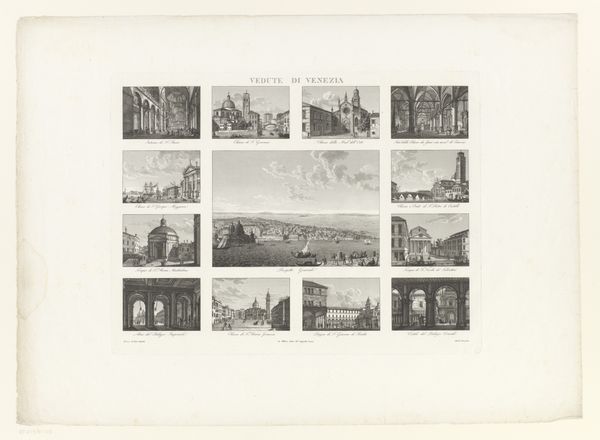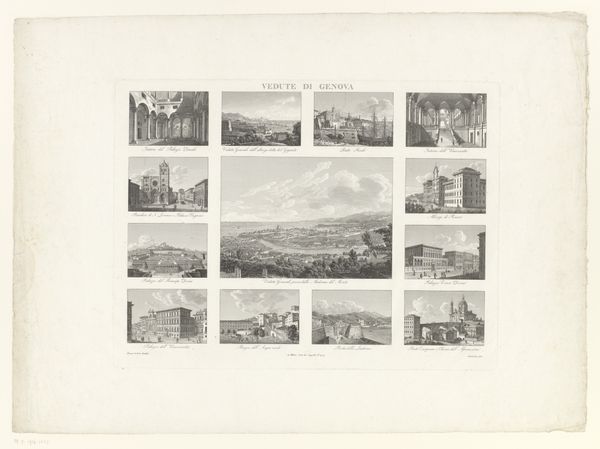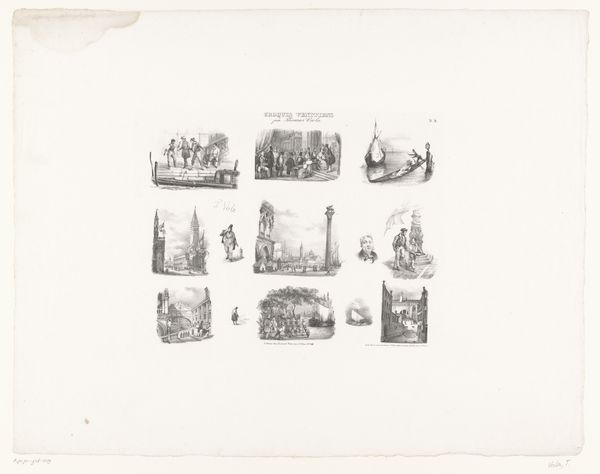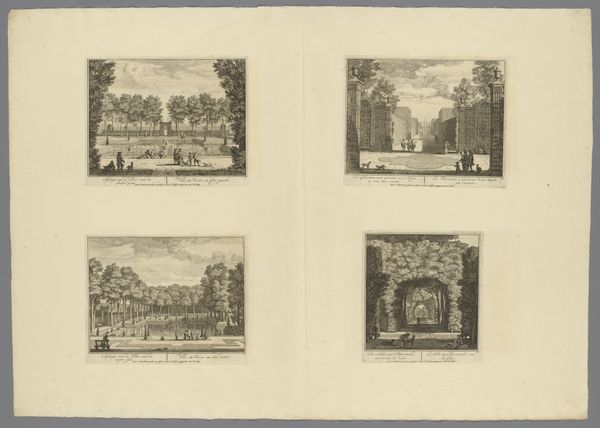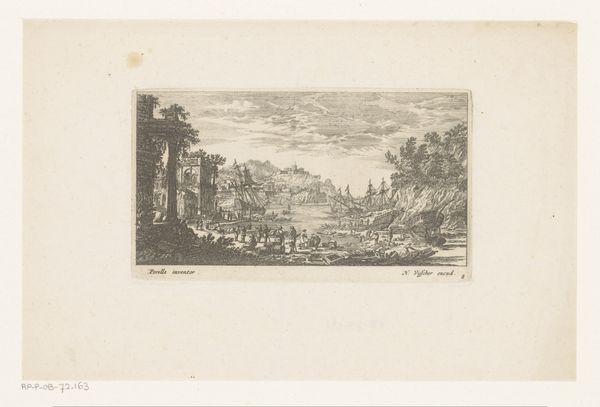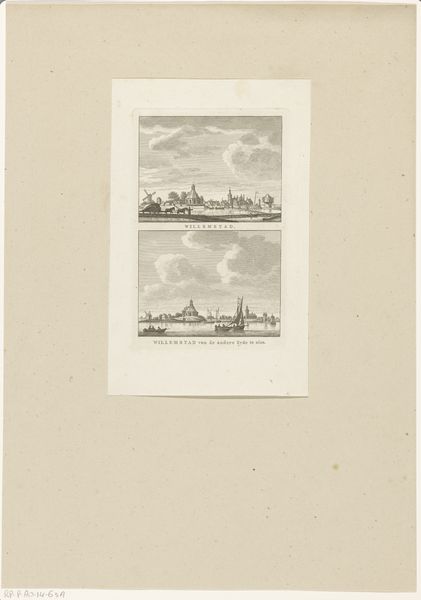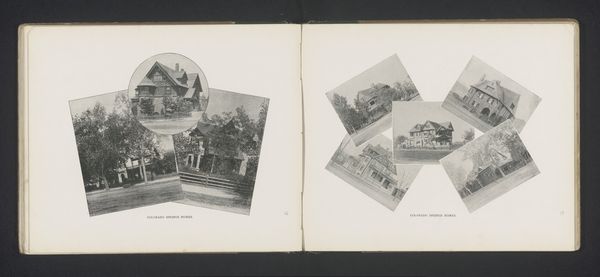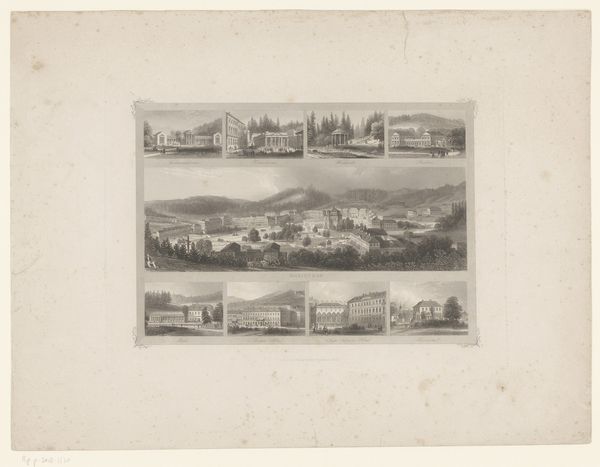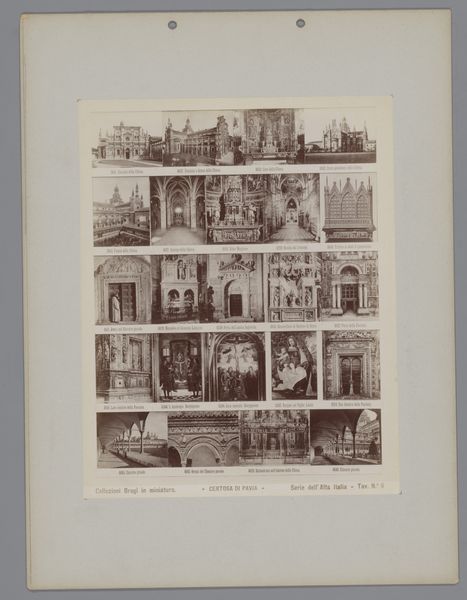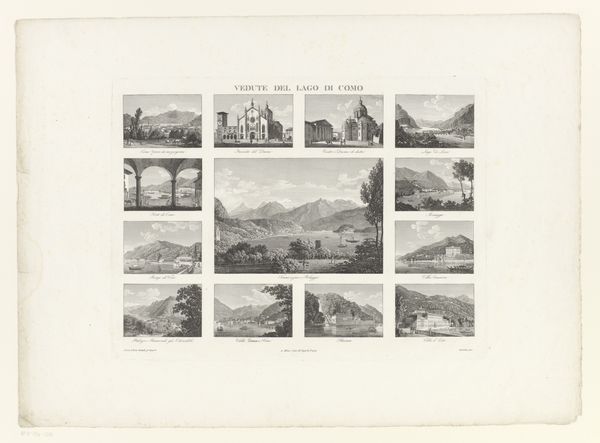
print, engraving, architecture
#
neoclacissism
#
16_19th-century
# print
#
arch
#
cityscape
#
italian-renaissance
#
engraving
#
architecture
Dimensions: height 330 mm, width 437 mm
Copyright: Rijks Museum: Open Domain
Curator: What strikes me first about this print is its almost clinical cataloging of urban life. There’s a sense of detached observation in the arrangement. Editor: It is strikingly serene, even nostalgic, given the urban subject matter. It's like viewing a city frozen in an idealized past, everything in its right place. Curator: Indeed. We're looking at "Views of Milan," an engraving created sometime between 1793 and 1830, now housed in the Rijksmuseum. Each vignette offers a carefully constructed glimpse of Milanese architecture. Editor: And it really operates like a symbolic map, doesn't it? The arch, the cathedral, the square—each carrying the weight of Milan's identity. You can feel echoes of the Renaissance, of civic pride and cultural authority, embedded in each structure. Curator: The neoclassical elements are undeniable. But it’s precisely the selection and arrangement of these views that speak to broader power dynamics. Who gets represented, from what angle, and how does that shape the narrative of a city and its people? Consider the Piazza del Duomo: It presents a romanticised viewpoint while sidelining, perhaps, less palatable realities of urban life during that time. Editor: It also has elements of visual rhetoric at play. The recurring use of arches, for instance. Arches can often symbolise triumph and transition. This begs the question—was Milan in a period of flux when this was made? And were the arches chosen to project confidence in a time of upheaval? Curator: That's astute. We must consider Milan's historical trajectory. These were turbulent years with Napoleon’s rise and the reshaping of European borders. The print acts as a form of visual reassurance, constructing an image of stability amid social and political earthquakes. Editor: Absolutely, that political angle changes everything about how we view the symbol of an arch, a street, and even a single building. A loaded archive. Thank you, my perspective has been changed completely. Curator: It's an invitation to excavate beneath the surface of aesthetics and ask probing questions about who benefits from this particular representation of Milan, which social issues might be obfuscated by the calm order of this composition.
Comments
No comments
Be the first to comment and join the conversation on the ultimate creative platform.

